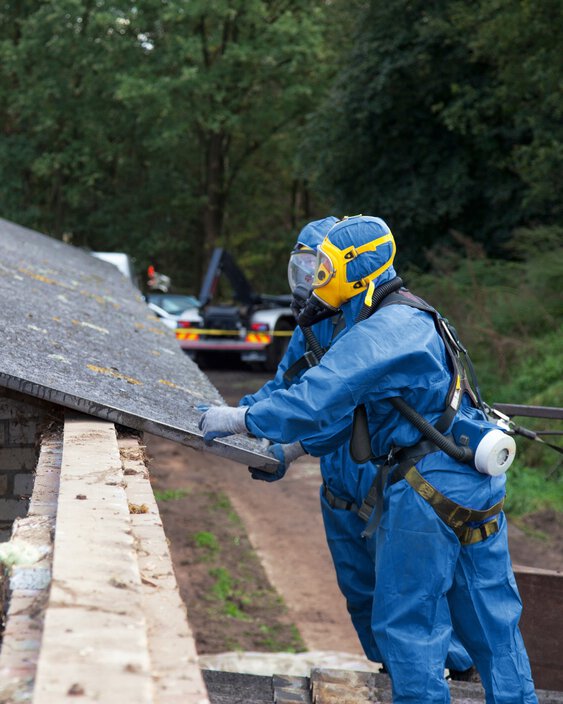
Asbestos
Asbestos claims are abating in Europe and the United States, but severe potential is developing in Asia.
Loading ...
Asbestos is the umbrella term for natural, friable fibre-forming silicon minerals that are resistant to heat and corrosion. It is used in the building and manufacturing industries. Some of its more common uses are in pipe and duct insulation, fire-retardant materials, brake and clutch linings, cement, and some vinyl floor tiles.
When breathing in asbestos, fibres usually enter the human body via the airways. In the respiratory system, fibres cause a chronic inflammation process and over a longer period stiffening of lung tissue by fibrous deposits. This impairs breathing and is the leading symptom of the asbestos-related breathing disorder called asbestosis. Signs and symptoms of asbestosis usually do not appear until years after exposure. Once apparent, the condition often worsens and can lead to disability and even death if exposure to asbestos continues.
Long-term asbestos exposure may lead to induction of a specific tumour of the pleura, called mesothelioma. The prognosis for mesothelioma is almost always poor and most studies report a median survival of less than one year after diagnosis. The lag time from first exposure to diagnosis is 20 to 40 years. However, in about half the cases there is no history of asbestos exposure, and the cause is unknown. People most at risk of developing asbestosis and mesothelioma are those who have had at least 10 years' exposure to asbestos, such as workers who were involved in mining, milling, manufacturing or installation of asbestos products.
The aforementioned medical risks have led to abundant claims and litigation in almost every industrial country. Asbestos litigation is the longest and most expensive mass tort in United States history. The total cost of asbestos litigation in US alone is estimated over USD 250 billion. Due to the nature of their statutory insurance systems, most European countries have fund-based compensation arrangements for asbestos-related impairments.
Globally, asbestos-cement products are expected to be the leading market for asbestos. World production has dropped over the years but is likely to remain steady at approximately 1.3 million metric tons for the near future, owing to continued demand for asbestos products in some regions of the world.
In 2023, Russia was by far the largest producer (48%), followed by Kazakhstan (20%), China (15%), and Brazil (14%).
The trade in and use of asbestos is now banned in many countries. Nevertheless, asbestos continues to be consumed to varying degrees in different regions of the world, with Asia and the Middle East consuming most of the annual asbestos production.
The (re)insurance industry may receive claims from different lines of business. In particular, product liability, employers’ liability, workers compensation and D&O are at risk of seeing major losses. The main future exposure for asbestos litigation can be expected in the major consumer countries. As in several other regions, the characteristics in these countries are an unconfined use and/or production of asbestos and entirely or partially low standards of workplace security. Due to insufficient health statistics and protracted health effects, a high burden of asbestos-related diseases and death cases is to be anticipated in these countries during the next decades. In contrast, European countries and the US have seen the peak of the asbestos epidemic already.
A few years ago, the question of asbestos contamination in other products came up. There has been debate about whether talcum powder could possibly be contaminated with asbestos and thus cause cancer after use. The US National Cancer Institute concluded that the current evidence does not support an association between perineal talc exposure and an increased risk of ovarian cancer. The American Cancer Society and the British foundation Cancer Research UK came to similar assessments. Nevertheless, in 2018 a Missouri jury ordered a US company to pay USD 4.7 billion to 22 women who alleged the company's talc-based products, including its baby powder, contain asbestos and caused them to develop ovarian cancer. The lawsuits in other cases are still ongoing. An end to the legal disputes is not in sight.